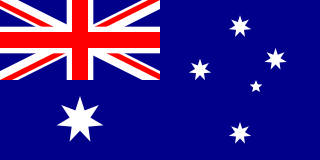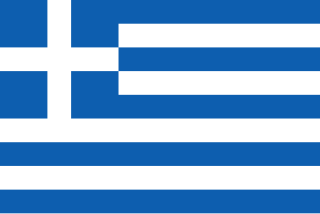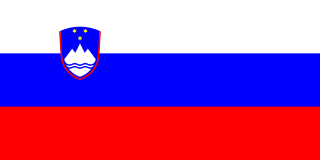
Michael John Milton, OAM is an Australian Paralympic skier, Paralympic cyclist and paratriathlete with one leg. With 6 gold, 3 silver and 2 bronze medals he is the most successful Australian Paralympic athlete in the Winter Games.

Alpine skiing at the 2002 Winter Paralympics consisted of 53 events, 34 for men and 19 for women which all took place at the Snowbasin Ski Area.
Alpine skiing at the 1998 Winter Paralympics consisted of 54 events, 35 for men and 19 for women.

Alpine skiing at the 1992 Winter Paralympics consisted of 48 events, 30 for men and 18 for women.

The 1984 Winter Paralympics, then known as The Third World Winter Games for the Disabled, were held in Innsbruck, Austria. The games took place from the 15 until 21 January. Present at these games were 419 athletes from 21 countries, Spain and the Netherlands competing for the first time in the Winter Paralympics, competing in 107 events across 3 sports. The inclusion of Les Austres and Cerebral palsy impairment groups contributing to the distinct increase in athlete participation with the total number of athletes jumping from 229 at Geilo, Norway in 1980.

Following the success of the first ever 1976 Winter Paralympics in Örnsköldsvik four years earlier, Norway was selected to host the Paralympic Games in 1980.

Australia sent a delegation to compete at the 1988 Winter Paralympics in Innsbruck, Austria, which was held between 17–24 January 1988. This marked the nation's fourth appearance at the Winter Paralympics. The delegation sent a group of five alpine skiers as they wouldn't get a medal in these games.

The 1994 Winter Paralympics were held in Lillehammer, Norway. Australia sent six male skiers, who won three gold, two silver and four bronze medals. Australia, at the time, achieved their best ever performance at a Winter Paralympics, finishing 5th overall in the alpine skiing competition, 9th in the medal standings, and 11th in the total medal count out of 31 nations.

Australia was represented by one non-competing athlete at the inaugural 1976 Winter Paralympics. The games were held in Örnsköldsvik, Sweden over seven days from 21 to 28 February 1976.

LW2 is a para-alpine and para-Nordic standing ski sport class defined by the International Paralympic Committee (IPC). Competitors in this class have severe disability in a lower limb, which may be a result of an amputation, or arthrodesis in the leg and hip. Depending on the type of skiing, the international classification process for LW2 skiers is handled by the IPC Alpine Skiing Technical Committee and IPC Nordic Skiing Technical Committee. National sport federations handle classification on the lower levels.

Chile sent a delegation to compete at the 2014 Winter Paralympics in Sochi, Russia from 7–16 March 2014. This was Chile's fourth participation in a Winter Paralympic Games. The Chilean delegation consisted of two alpine skiers, Jorge Migueles and Santiago Vega. Migueles finished 25th in the men's standing slalom and 20th in the men's standing giant slalom, while Vega finished 32nd in the regular slalom.

Mexico competed at the 2014 Winter Paralympics in Sochi, Russia, held between 7–16 March 2014. This was Mexico's third appearance at a Winter Paralympic Games. They were represented by a single athlete, alpine skier Arly Velásquez, who was participating in his second Paralympics. His best finish was 11th place in the sitting super-G.

Iran sent a delegation to compete at the 2014 Winter Paralympics in Sochi, Russia from 7–16 March 2014. This was Iran's fifth time participating in a Winter Paralympic Games. The Iranian delegation consisted of a single alpine skier, Sadegh Kalhor, who had his leg amputated in a skiing accident as a teenager. In the standing slalom event, he finished in 20th place.

Armenia sent a delegation to compete at the 2014 Winter Paralympics in Sochi, Russia from 7–16 March 2014. This was the nation's fifth appearance at a Winter Paralympic Games. The delegation consisted of a single alpine skier, Mher Avanesyan, who lost both arms as a child after coming into contact with a high-voltage electrical wire. In the men's standing slalom he came in 34th place out of 35 competitors who finished the race, and he failed to finish the giant slalom.

Denmark sent a delegation to compete at the 2014 Winter Paralympics in Sochi, Russia from 7–16 March 2014. This was Denmark's tenth appearance at a Winter Paralympic Games. The Danish delegation to Sochi consisted of two alpine skiers, Ulrik Nyvold and Line Damgaard. Nyvold failed to finish either of his events, while Damgaard placed 12th in the women's standing slalom and 15th in the women's standing giant slalom.

Greece sent a delegation to compete at the 2014 Winter Paralympics in Sochi, Russia from 7–16 March 2014. This was Greece's third appearance at a Winter Paralympic Games. Their only athlete was alpine skier Efthymios Kalaras. He suffered a spinal cord injury two decades before these Paralympics, and was a returning Paralympic silver medalist from the 2004 Summer Paralympics in the discus throw. He finished 22nd in the sitting giant slalom, nearly a minute behind the gold medal time.

Romania competed at the 2014 Winter Paralympics in Sochi, Russia, held between 7–16 March 2014. This was Romania's second appearance at a Winter Paralympic Games. The Romanian delegation consisted of one alpine skier, Laura Valeanu, who finished fifth in the slalom and seventh in the giant slalom.

Slovenia sent a delegation to compete at the 2014 Winter Paralympics in Sochi, Russia, held between 7–16 March 2014. This was the nation's fourth appearance in the Winter Paralympic Games The Slovenian delegation consisted of a single athlete, the alpine skier Gal Jakič, who failed to finish either of his two events.

Turkey sent a delegation to compete at the 2014 Winter Paralympics in Sochi, Russia, held between 7–16 March 2014. This marked the nation's first participation in the Winter Paralympic Games. Turkey sent two athletes; Mehmet Çekiç and Hilmi Esat Bayindirli; both were competitors in alpine skiing. The nation's best finish in any event was 18th, by Bayindirli in the men's sitting giant slalom.

The Netherlands sent a delegation to compete at the 2014 Winter Paralympics in Sochi, Russia, held between 7–16 March 2014. The Netherlands delegation consisted of seven competitors, all of which were competing in sports under the alpine skiing banner. Bibian Mentel won the nation's only medal at these Paralympics, a gold in women's snowboard cross. With one gold medal, the Netherlands ranked a joint 14th place on the medal table with Switzerland.




















